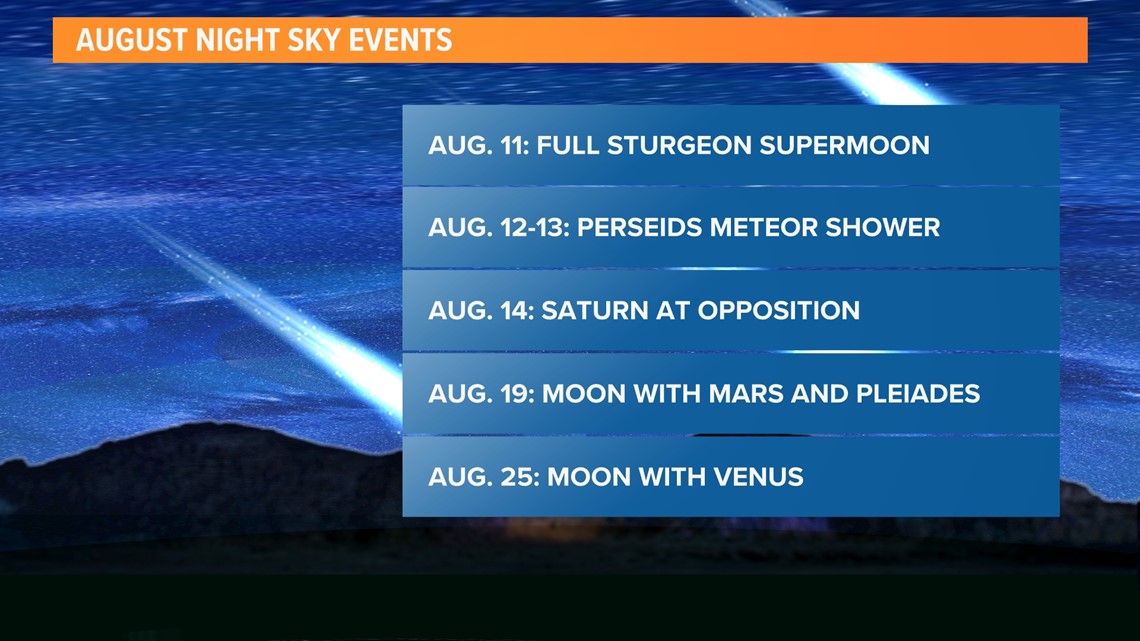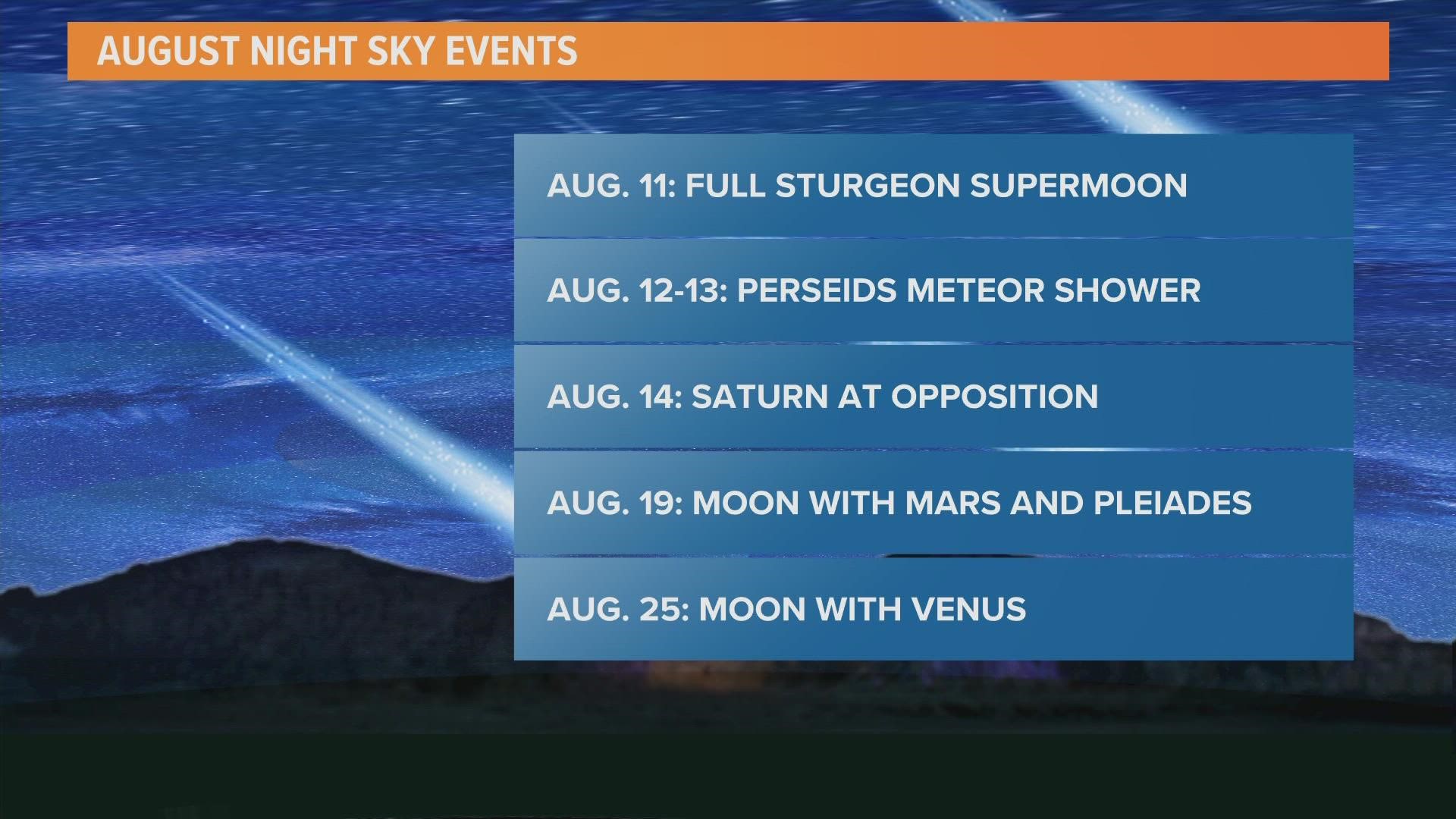LOUISVILLE, Ky. — Break out the telescopes and look to the stars! This August you'll be able to spot several night sky events around Kentuckiana.
To get the best view of any of these events, it's best to get away from the light pollution and allow your eyes 15 to 20 minutes to adjust to the dark.
Here's what you'll be able to see:
August 11: Full Sturgeon Supermoon
The last supermoon of the year is the Full Sturgeon Moon on Aug. 11.
This special moon gets its name due to a large amount of sturgeon fish in the Great Lakes during this time of year. It's also known as the "Corn Moon" because it's around the start of the harvest season.
August 12-13: Perseids Meteor Shower
Following the Full Sturgeon Supermoon, on Aug. 12 going into Aug. 13, the annual Perseids Meteor Shower will be at its peak.
While the bright moon will hinder how many meteors will be visible, the Perseids typically produces the brightest meteors, and many will be bright enough to see.
At its peak, there could be up to 60 meteors per hour. The meteors are debris from the comet Swift Tuttle.


August 14: Saturn's closest approach to Earth
Sunday, Aug. 14, will be another late night to view Saturn. According to NASA, due to the planet at opposition, it will shine the brightest it will be all year. It will also make it's closest approach to Earth this year. It will be a great night to view Saturn's rings and brightest moons with a backyard telescope, weather depending. Saturn will rise in the southeastern sky around 8:45pm and set west-southwest at 6:58 am. You will also be able to view Jupiter, position to the top left of the moon.
August 19: Moon with Mars and Pleiades
On Friday, Aug. 19, the moon and mars will be close to one another in the sky.
The reddish planet will position itself at the bottom of the moon. A cluster of stars, Pleiades, will be position to the upper left of Mars.
August 25: Moon with Venus
Early risers will get a spectacular view of the Moon and Venus on Thursday, Aug. 25.
The pair will rise on the east-northeast horizon around 5:30 am. Venus will shine bright to the bottom right of the of the crescent moon.

